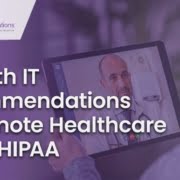MACRA MIPS – Get Ready For These Changes In 2019!
For those covered by Medicare, the paperwork requirements wait for your attention, as a physician, and you can’t take a step back from those duties.
Why has this become crucial for medical practices? Because the Medicare Access and CHIP Reauthorization Act of 2015 and MIPS incentives depend on fulfilling these requirements in the new value-based care system!
And, once you have followed these requirements in letter and spirit, 5% incentives add to your 2020 Medicare payments. Those of you, who don’t think much of this payment adjustment, think again! Because the adjustments increase your finances by huge numbers!
Not all of us are in it for monetary benefits. Nevertheless, the reputational advantage as a clinician will take your practice to the next level. People are going to recognize you as a clinician with superior healthcare knowledge and consider you as an authority in the industry.
To consider MACRA into your practice, upgrade your outdated EHR system to the 2015 certified EHR technology edition. And, consider doing so in case you are an old-fashioned paper-based practice. In addition to that, ensure the technology vendor is trustworthy and has a history of meeting government proposals. A tip to remember here is that proper training of the staff goes hand in hand with the newly installed EHR system.
Prepare yourself for the few changes regarding exemptions under extreme conditions, an increase in the cost category’s weight, an increase in low-volume thresholds, and a boost to the cost performance category in 2019.
Change 1 – Exemptions under Harsh and Uncontainable Situations

CMS owns the fact that extreme conditions can affect gathering, storing, and submitting patient information. Hence, in 2019, it gives more space to such clinicians under intense circumstances. According to Clinician Today, in the performance year 2017, the clinicians were not scrutinized for any lack of information if they had to face extreme conditions such as California wildfires.
The automatic exemptions expect to continue going forward in 2019. God forbid, if there are any acts of God or natural disasters, as a MIPS reporting physician, CMS will not put you on a penalty list. First, we pray that neither a flood nor a wildfire breaks around your practice. Second, choose P3 Healthcare Solutions MIPS consulting service for Quality measures and reporting other categories properly 1-844-557-3227.
info@p3care.com is the address you’ll be emailing your queries to.
Change 2 – Expect an Increase in the Weight of the Cost Category
As the Medicare reimbursement model transforms into the value-based care model, MIPS in healthcare will have the cost category hold more weight than in 2018. It was at 10% of the total weight in the previous year and it is going to stay that way or go higher in 2019.
Clinician Today mentions that the cost category is going to accommodate 30 percent of the total MIPS score (CPS) by the year 2022. By preparing early and maximizing on this category, your practice can achieve a decent MIPS final score. Consequently, everything falls in line with quality-based care.
To maintain the balance between categories, expect a formidable decrease in the weight of the Quality category at an equal level.
Change 3 – Expansion in Low-Volume Thresholds (LVT)
A Low-Volume Threshold (LVT) depends on the number of allowed Medicare Part B charges and the number of patients cared for by an eligible clinician. There is a consistent increase in the LVT in subsequent years until 2018. And, 2019 is not going to be any different.
Currently, the LVT has more than or equal to 200 Medicare patients or your practice/group has billed more than or equal to $90,000 in Medicare Part B allowed charges. It was an uptick to MIPS 2017 requirements of 100 Medicare Part B patients or $30,000 Medicare Part B allowed charges.
You may not be eligible in the past year, but there is a high probability of your eligibility for MIPS submissions in 2019. Therefore, be well aware, and as soon as you reach the Low-Volume Threshold, P3Care being a MIPS qualified registry, reports on your behalf so that you receive high incentives.
Change 4 – MIPS Cost Category to Experience a Boost
We can see the cost category weight rise to 15% in 2019. MIPS 2019 reporting is not going to be a child’s play because the focus on trimming healthcare expenses is now more than before. CMS suggests adjusting this raise by offsetting the Quality category from 50 to 45%.
Hence, be on the lookout for any changes in government regulations around Medicare reimbursements! Quality reporting aims to improve healthcare delivery and better compensation to physicians.
We try to give you insight into the world of medicine as it crosses paths with medical billing. P3 Healthcare Solutions deals with the revenue cycle management process efficiently when it comes to MIPS consulting and medical billing services in general. One remedy is to stay updated with the latest Medicare MIPS reporting requirements and to provide quality billing services to clinicians.
















Leave a Reply
Want to join the discussion?Feel free to contribute!